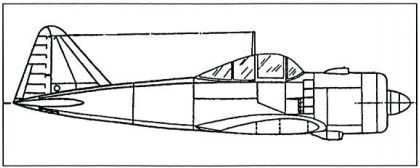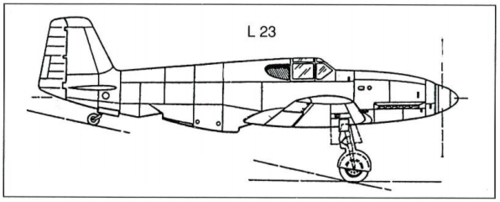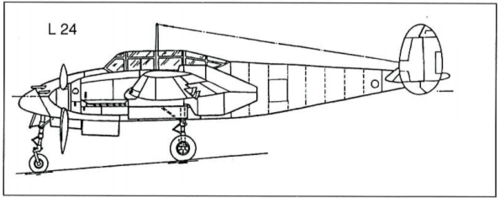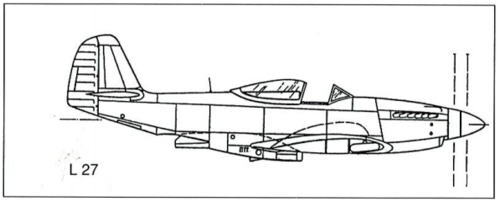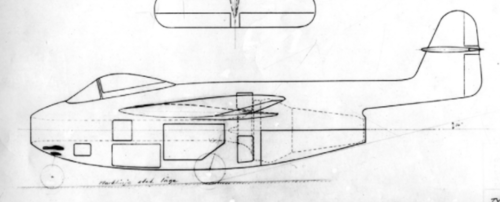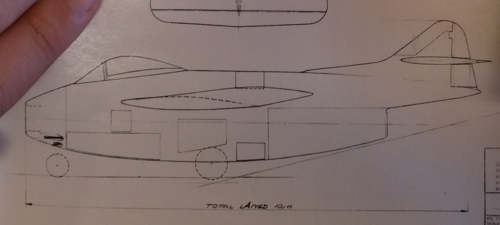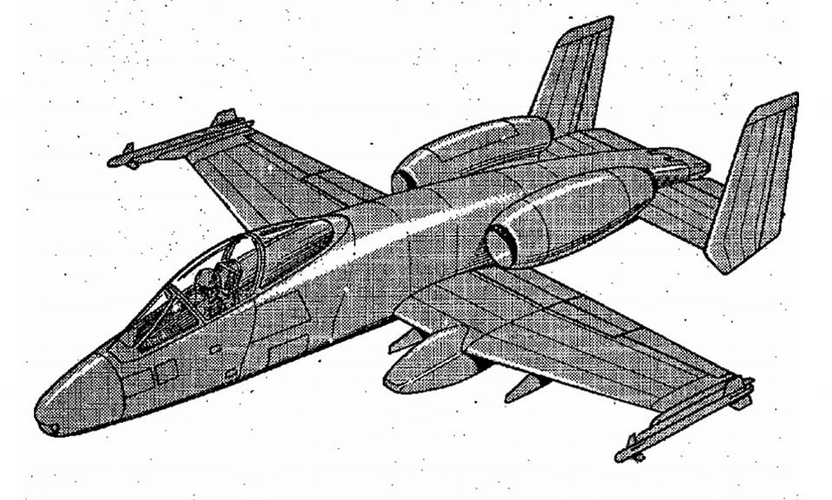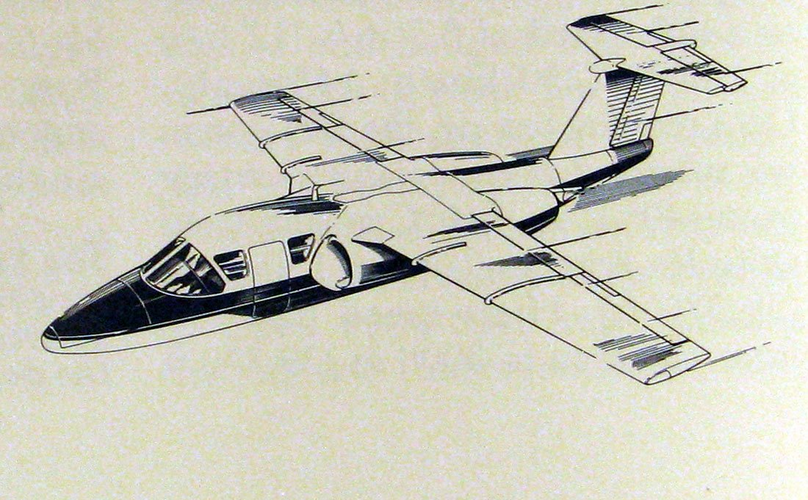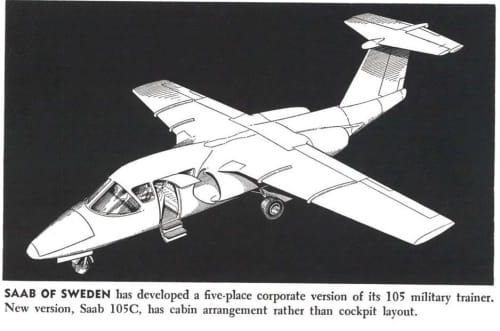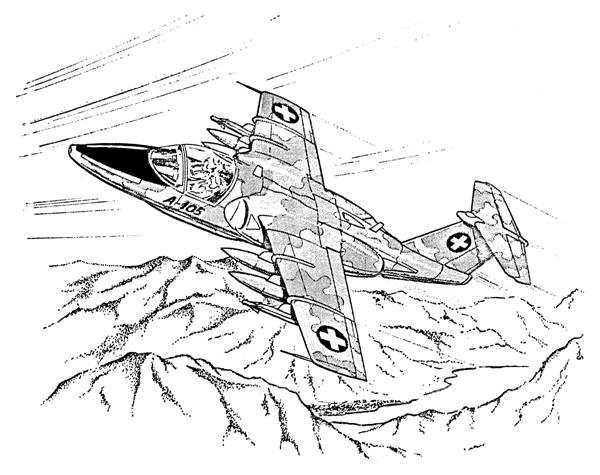blockhaj
Swedish "want to be" aviation specialist
- Joined
- 9 February 2017
- Messages
- 408
- Reaction score
- 519
Note: I know there already exists a thread about SAAB designations etc but that thread also includes other companies besides SAAB. Link to thread. While i understand why those companies were included i personally think we should have a thread dedicated to each of them separately as they designed aircraft independently of each other for the majority of their existence etc.


However details are fuzzy and the end product that became SAAB is more of a spiritual successor to ASJA rather than a direct transcendent. For example the company name and logo was directly inherited from SAAB Trollhättan. The initial logotype showed a Junkers Ju 86 as those had been built by SAAB Trollhättan. Some sources even claims that SAAB Trollhättan bought up ASJA in 1939. How that was possible when ASJA had just beaten them in two design competitions is yet another mystery but it would at least explain the choice of name and logotype. The logo would however later feature a SAAB 18 instead of the Ju 86. This change was done around 1943.
In either case. For the sake of this thread we will consider 1939 as the starting point for SAAB and will therefor not include designs from ASJA unless specified. I plan to make a separate thread for ASJA (and hopefully also AFF/SAAB Trollhättan). I will however include designs and productions initiated by ASJA and SAAB/T that was finished by SAAB.
Military aircraft
Experimental projects
Private projects
SAAB colaborations
SAAB designed helicopters/rotor-craft
Saab designed drones
I will update this thread with more info as time goes on. As you can see there is a lot to be added.
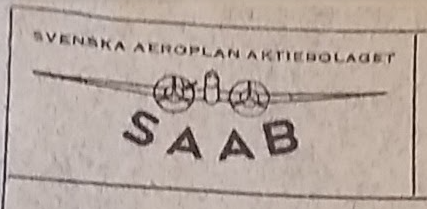
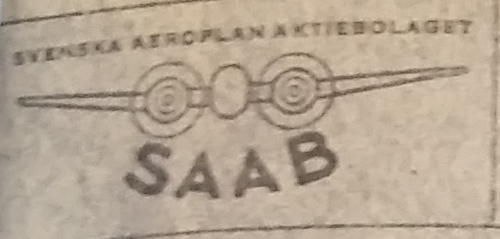
Anyway this thread is dedicated to the famous SAAB company.
SAAB is an abbreviation of "Svenska Aeroplanaktiebolaget", although sometimes spelled as Svenska Aeroplan AB. This translates to Swedish Aeroplane Company Limited.
In 1965 SAAB would adopt the abbreviation as their main name, thus becoming Saab AB. This was done to for international reasons.
Origin story
The origin of SAAB is extremely confusing as several major sources such as SAAB themselves claims that they were founded in 1937 when Bofors in conjunction with the Swedish government decided to start a new unified aircraft company to manage the Swedish need for combat aircraft during the coming war. It is said that this was achieved by merging the company ASJA with Bofors own newly formed aircraft group called SAAB Trollhättan (SAAB/T)(which basically consisted of NOHAB Flygmotorfabriker and some Austrian plane designer) to create AFF (AB Förenade Flygverkstäder). However documents from the era shows that both ASJA and Bofors's SAAB/T did not merge fully until 1939. Some sources even indicates that the merging process continued into the 1940's. This gets even more confusing when you dig deeper. For example, during the projects P7 (SAAB 17) and P8 (SAAB 18), which took place after the suggested merge (1939), both AFF and ASJA would act independently and create their own competing designs for the competition. ASJA's designs won both times. This lead to the Austrian lead designer of AFF (SAAB/T) to quit the Swedish industry and return to Austria. After this ASJA would apparently absorb what was left of AFF/SAAB Trollhättan and form what came to be SAAB. Who came out on top in the end is arguably ASJA as only their designs survived the merge and it is because of them SAAB resides in Linköping to this day.SAAB is an abbreviation of "Svenska Aeroplanaktiebolaget", although sometimes spelled as Svenska Aeroplan AB. This translates to Swedish Aeroplane Company Limited.
In 1965 SAAB would adopt the abbreviation as their main name, thus becoming Saab AB. This was done to for international reasons.
Origin story
However details are fuzzy and the end product that became SAAB is more of a spiritual successor to ASJA rather than a direct transcendent. For example the company name and logo was directly inherited from SAAB Trollhättan. The initial logotype showed a Junkers Ju 86 as those had been built by SAAB Trollhättan. Some sources even claims that SAAB Trollhättan bought up ASJA in 1939. How that was possible when ASJA had just beaten them in two design competitions is yet another mystery but it would at least explain the choice of name and logotype. The logo would however later feature a SAAB 18 instead of the Ju 86. This change was done around 1943.
In either case. For the sake of this thread we will consider 1939 as the starting point for SAAB and will therefor not include designs from ASJA unless specified. I plan to make a separate thread for ASJA (and hopefully also AFF/SAAB Trollhättan). I will however include designs and productions initiated by ASJA and SAAB/T that was finished by SAAB.
Military aircraft
License built aircraft
Sorted by air force designation.
The year's featured below goes together with fate. Not built = year of cancellation, prototype = year of first flight, service = year of introduction.
L-series
The L-series was a continuation of ASJA's designation system used by them prior to the merge in 1939. What L stands for is unknown but it could be a remnant of an even older naming system. ASJA was originally founded as a subsection to a Train manufacturer etc. However unlike ASJA, SAAB would use numbers set by the Swedish air force, thus some numbers are missing.
The year's featured below goes together with fate. Not built = year of cancellation, prototype = year of first flight, service = year of introduction.
R-series
R = Reaktionsmotor (reaction engine), Swedish for jet engine. The R-series are air force projects and not directly related to private ventures etc. The numbers are only used prior to finalisation. Example: R1001 > Fpl 29. Once jet engines became common (ca 1950) they stopped using an R prefix. Thus below numbers lack the R prefix even though the series is called the "R-series".
The year's featured below goes together with fate. Not built = year of cancellation, prototype = year of first flight, service = year of introduction.
Sorted by air force designation.
The year's featured below goes together with fate. Not built = year of cancellation, prototype = year of first flight, service = year of introduction.
- B3: License built Junkers Ju 86 K-13 bomber for the Swedish air force. Initially 40 were planned but production was halted in 1940 after 16 had been completed due to the type being obsolete. The license was originally given to SAAB/T in 1937 but this went over to SAAB once the merge was complete. Production was however kept at SAAB's facilities in Trollhättan.
- B3C: License built Ju 86 K-13 bomber. 9 built. Swedish made SFA Mercury XXIV engines.
- B3D: License built Ju 86 K-13 bomber. 7 built. Polish made PZL Mercury XIX engines. Later retrofitted for torpedo bombing.
- B5: ASJA leftover. License built Northrop Model 8A-1 dive bomber for the SAF. License originally given to ASJA but went over to SAAB once merge was complete.
- B5C: Further developed Northrop Model 8A-1. First two series (B 5B) made by ASJA. Third series (1940) built and developed by SAAB. B 5C differed from B 5B in larger internal capacity (2x 50 kg bombs) and lack of external 50 kg mounts on belly (only 1x 250/500 kg bomb).
- SK14: ASJA leftover. License built North American NA-31 trainer aircraft (NA-16 derivative) for the SAF. License originally given to ASJA but went over to SAAB once merge was complete.
- SK14A: Further developed NA-31 (SK 14) with Piaggio P VII engine. Developed by ASJA. 83 built. 23 by ASJA, 60 by SAAB.'
- SK14N (unofficial name): SK 14A modified with fixed tricycle landing gear in 1944 to train Saab 21 pilots. 3 converted. N most likely stands for "nosställ" (nose gear).
L-series
The L-series was a continuation of ASJA's designation system used by them prior to the merge in 1939. What L stands for is unknown but it could be a remnant of an even older naming system. ASJA was originally founded as a subsection to a Train manufacturer etc. However unlike ASJA, SAAB would use numbers set by the Swedish air force, thus some numbers are missing.
The year's featured below goes together with fate. Not built = year of cancellation, prototype = year of first flight, service = year of introduction.
- L-17: ASJA leftover. ASJA name: L-10. Reconnaissance dive bomber for the SAF. Originally meant as a pure reconnaissance plane. Part of project P7. Became Flygplan (Fpl) 17.
- L-17A: Version with Twin Wasp TWC3 (US made) or STWC3 (Swe made) engine. Model B bomb bay and gunner canopy.
- B17A: Dive bomber for the SAF. 1944.
- S17AS: Maritime reconnaissance torpedo bomber float aircraft with ability to be launched from ship catapults. Not built.
- L-17B1: version with Nohab Pegasus My XXIV engine. B1 = Early production. Model A bomb bay and gunner canopy.
- P7B: Prototype. 1940.
- B17B: Dive bomber. 1942.
- S17BL: Reconnaissance aircraft. 1942.
- S17BS: Maritime reconnaissance float aircraft. 1942.
- L-17B2: version with Nohab Pegasus My XXIV engine. B2 = Late production. Model B bomb bay and gunner canopy.
- B17B: Dive bomber. 1943.
- S17BL: Reconnaissance aircraft. 1943.
- S17BS: Maritime reconnaissance float aircraft. 1943.
- L-17C: version with Piaggio P XI RC-40 engine. Model B bomb bay and gunner canopy.
- B 17C: Dive bomber. 1944.
- L-17A: Version with Twin Wasp TWC3 (US made) or STWC3 (Swe made) engine. Model B bomb bay and gunner canopy.
- L-18: ASJA leftover. ASJA name: L-11. Fast medium dive bomber for the SAF. Part of project P8. Became Flygplan (Fpl) 18.
- L-11: initial design. Twin Wasp engines and tricycle landing gear. Tricycle landing gear rejected by SAF. Evolved into L-18A. Not built. 1939.
- L-18A: version with Twin Wasp TWC3 (US made) or STWC3 (Swe made) engines.
- P8A: Prototype. 1942.
- B18A: Fast medium dive bomber. 1944.
- S18A: B 18A modified for reconnaissance. All aircraft converted. 1945.
- T18A: Torpedo bomber. Enlarged bomb bay for internal torpedo. 2x 20 mm akan m/41A w. 130 rpg in nose, bottom rear gun removed. 1942. Not built. T18B/C selected instead.
- L-18B: version with Daimler-Benz DB605B engines (DB or SFA made).
- S18B: Reconnaissance aircraft. 1944. None built. B18A selected for conversion instead.
- B18B: Fast medium dive bomber. Bottom rear gun removed. 1945
- A18B: B18B modified to attacker. All aircraft converted. 1948-1950. Further modifications > 1952.
- T18B: Torpedo bomber. Same specs as T18A + optional 57 mm autocannon in bay, optional 1000 kg bomb in bay, optional smoke generator in bay. Initial design for T18B. Prototype 1945. Proved too fast for torpedo bombing. Relegated to Maritime attacker for SAF without torpedo or 1000 kg bomb. 1947. 57 mm autocannon implemented 1948. Rockets implemented 1950.
- T18B-1: Proposed name for T18B fitted with torpedo. Not used.
- T18B-2: Proposed name for T18B fitted with 57 mm autocannon. Not used.
- BJ18B: Night fighter. Radar in nose or bay. 4x 20 mm akan m/45 with 175 rpg under nose. DB605B running 100 octane fuel. 1945. Not built.
- L-18C: version with 2000 hp Double Wasp engines (note: some contradicting sources/in research)
- T18C: Torpedo bomber. Same specs as initial T18B. Not built. L-18B selected as base in 1944.
- J18C: Night fighter. Radar in nose or bay. 4x 20 mm akan m/45 with 175 rpg under nose. 1945. Not built.
- L-18D (speculative name): version with 1700 hp DB605E engines (note: in research)
- B18B with DB605E engines: Proposed version if DB605E engines could be acquired. Not built. 1945.
- L-18R (collective name by author): proposed jet engine test beds.
- R18A: B18A fitted with a jet engine outside of its bomb bay. Planned engines: SFA R101, SFA R102, STAL Skuten. Not built. R18B selected instead. Ca 1945.
- R18B: B18B fitted with a jet engine outside of its bomb bay. Planned engines: SFA R101, SFA R102, STAL Skuten. Not built as DH Goblin engines were acquired. Ca 1945.
- (unknown project name): B18B fitted with a jet engine outside of its bomb bay. Planned engines: SFA R201, STAL Dovern. Not built. T 18R selected instead. Ca 1950.
- (unknown project name): T18B fitted with a jet engine outside of its bomb bay. Planned engine: STAL Dovern. Not built as RR Avon engines were acquired. Ca 1951.
- L-19: ASJA leftover. ASJA name: L-12. Fighter for the SAF. Part of project P9. Intended air force designation J19. Not built. Dec 1939. Intended as Flygplan (Fpl) 19.
One man, single engine, low wing, full metal monoplane fighter.
1215 hp Bristol Taurus engine.
605 km/h
4x 13,2 mm akan m/39 autocannons in wings.
- L-21: First SAAB designed aircraft. Originally named L-13. Fighter for the SAF. Became Flygplan (Fpl) 21.
- (L-13 sketch): original idea. Radial pusher engine with twin boom configuration drawn up by Frid Wänström in Januari 1941. Not built.
- L-13: Refined idea. Inline DB601 or DB603 pusher engine with twin boom configuration and inverted gull wing. March 1941. Not built. Proposed to air force. Accepted for further evaluation.
- L-21: Projected fighter for the SAF. DB601 or 603 engine. 4x 13,2 mm guns, ejection seat, 620 km/h. Inverted gull wing rejected. First SAF aircraft approved with tricycle landing gear.
- L-21A: version with Daimler-Benz DB605B engine (DB or SFA made).
- L-21: prototype. Had rounded rudders. 1943.
- J21A-1: SAF fighter. 4x 13,2 mm akan m/39A, 350 rpg, 1x 20 mm akan m/41A (drum fed), 140 rpg. 1945.
- J21A-2: SAF fighter. 4x 13,2 mm akan m/39A, 350 rpg, 1x 20 mm akan m/45 (belt fed), 140 rpg. 1946. Improved flaps and radiator exhausts.
- B21A-3: SAF dive bomber. J21A-2 with automatic bombing computer, hard points on wings for 50 kg bombs, central pylon for 500 kg bomb. 1947.
- A21A-3: SAF attacker. B21A-3 modified to attacker. Rocket ability + ballistic computer. All aircraft converted 1949-1951. Rato + wing tip drop tanks 1951. Further modifications > 1952.
- L-21B: version with 1700 hp Daimler-Benz DB605E engine.
- J21B: Proposed version and upgrade to existing J21A-1's. Pressurized teardrop cockpit, 3x 20 mm akan m/45, 200 rpg, radar range finder in left boom. 680 km/h. Not built. 1945.

- J21B: Proposed version and upgrade to existing J21A-1's. Pressurized teardrop cockpit, 3x 20 mm akan m/45, 200 rpg, radar range finder in left boom. 680 km/h. Not built. 1945.
- L-21R: version with jet engine. R = Reaktionsmotor (reaction engine).
- Fpl 21 Ro: proposed test aircraft fitted with a jet engine. Proposed engines were SFA R101 or R102. Not built. 1946.
- J21R (J21A): Proposed jet fighter conversion of J21A for SAF. SFA R102 engine. Not built. 1946.
- J21R (J21B): Proposed jet fighter conversion of J21B for SAF. SFA R102 engine. Not built. 1946.
- J21R (new): Proposed jet fighter for SAF. SFA R102 engine. Was to have J21B armament. Not built. 1946.
- J21RA: Jet fighter for SAF. 30 modified J21A-1. UK made RM1 (Goblin II). 1949.
- J21RB: Jet fighter for SAF. 30 modified J21A-1. Swe made SFA RM1A (Goblin III). Relegated to attackers prior to delivery. 1950.
- A21RA: Jet attacker for SAF. Converted J21RA. BT9 ballistic computer and hardpoints for rockets added. 1951. Wingtip drop tanks added june 1951.
- A21RB: Jet attacker for SAF. Converted J21RB. BT9 ballistic computer and hardpoints for rockets added. 1951. Wingtip drop tanks added june 1951.
- L-23: Fighter for the SAF. Competitor to the L-21. Not built. Intended as Flygplan (Fpl) 23.
One man, single engine, low wing, full metal monoplane fighter. Alternative to the L-21 in case that design would fail. Not built. 1941. 1944. (Cancelled twice)
1475 hp DB605B engine.
626 km/h
4x 13,2 mm akan m/39 autocannons in wings, 1x 20 mm akan m/41A shooting through the propeller.
- L-24: Heavy fighter and dive bomber for the SAF. Not built. 1944. Intended as Flygplan (Fpl) 24. (note: in research)
Two man, twin engine, mid wing, full metal monoplane heavy fighter and dive bomber. Cancelled in 1944 when it was realized that the L-18 could fill its roles with better performance. Metal for a prototype was cut.

- B24: SAF Dive bomber. 4x 8 mm ksp m/22 machine guns in nose, 2x 20 mm akan m/41A cannons in wing roots, 1x 13,2 mm akan m/39 for gunner. 1400 kg of bombs.
- BJ24: SAF Heavy fighter and attacker. Same as B24 but with the addition of 4x 8 mm ksp m/22 machine guns in the wings. 1000 kg of bombs.
- J24: SAF Heavy fighter and night fighter. 4x 13,2 mm or 20 mm guns in nose, 2x 13,2 mm or 20 mm guns in wing roots, 1x 13,2 mm for gunner. Radar range finder.
- L-26: Trainer for the SAF. Not built. 1945. T-6 Texan bought instead. Reworked into SAAB 91 Safir. Intended as Skolflygplan SK26.
Tandem seat, single engine, low wing, monoplane trainer with retractable landing gear. Inspired by NA-31 (NA-16). Planned to use Isotta-Fraschini Delta RC 351 enginers from scrapped Ca.313's. Surplus T-6 Texan bought instead. Reworked by SAAB into SAAB 91 Safir.
- L-27: Fighter for the SAF. Originally named Jx-RG Not built. 1945. Intended as Flygplan (Fpl) 27.

One man, single engine, low wing, full metal monoplane fighter with pressurized cabin and ejection seat. Competitor to the L-21B. Not built. 1945.
2200 hp Griffon RG 4SM engine with contra rotating propeller.
720 km/h (4x 20 mm akan m/45 in wing with 120 rpg)
712 km/h (4x 20 mm akan m/45 under wings with 200 rpg)- Jx-RG Alt 1: version with Griffon engine and conventional tail.
- Jx-RG Alt 2: version with Griffon engine and butterfly tail.
- Jx-MX Alt 1: version with 2500 hp SFA MX engine and conventional tail.
- Jx-MX Alt 2: version with 2500 hp SFA MX engine and butterfly tail.
R-series
R = Reaktionsmotor (reaction engine), Swedish for jet engine. The R-series are air force projects and not directly related to private ventures etc. The numbers are only used prior to finalisation. Example: R1001 > Fpl 29. Once jet engines became common (ca 1950) they stopped using an R prefix. Thus below numbers lack the R prefix even though the series is called the "R-series".
The year's featured below goes together with fate. Not built = year of cancellation, prototype = year of first flight, service = year of introduction.
- JxR: (J = Jakt = Pursuit, X = experiment/projekt, R = Reaktionsmotor = Reaction engine)
- RX1: ad
- RX2: ad
- 101: Single seat fighter for SAF. Part of project JxR. Not built. 1945.
Called "the cigarr" it was similar looking to the P-80 Shooting star and was thus cancelled when the P-80 was revieled in 1945 to not raise suspicion of Sweden spying on the US. De Haviland Ghost engine, 4x 20 mm akan m/45 with 200 rpg and radar range finder.
- 1000: Single seat fighter for SAF. Became Flygplan (Fpl) 29 Flygande Tunnan (The Flying Barrel). Part of project JxR.
- 1001: Single seat fighter with a single air intake in the nose.
- 1001 (unknown blueprint nr): Straight wings, 4x 20 mm akan m/45, 180 rpg, radar range finder, STAL skuten engine. Not built. 1945.

- 1001 (blueprint: 512807): Swept wings, 4x 20 mm akan m/45, 180 rpg, radar range finder, Ghost engine. Not built. 1945.

- 1001 (blueprint: 512168): Swept wings, 4x 20 mm akan m/45, 180 rpg, radar range finder Ghost engine. Not built. 1946.

- 1001 (unknown blueprint nr): Swept wings, 4x 20 mm akan m/47, 180 rpg, RM2 (Ghost) engine. Service version.
- J29 prototype 1: same as J29A but with airbrakes on wings. 1948.
J29A: Fighter for SAF. 1950. Hardpoints for rato added in 1951. Hardpoints for rockets added in 1952.
J29B: Fighter for SAF. Added fuel tanks in wings. 1953. - S29C: Reconnaissance aircraft for SAF. Equal to J29B. Cannons replaced by several cameras. 1954. Dog-tooth wings added in 1955-56.
- J29D: Fighter for SAF. Afterburner and 4x 30 mm Hispano HSS 825 guns. Prototype with gun mockups: 1952. Prototype with AB: 1954. Cancelled: 1955.

- J29D: All weather fighter for SAF. Afterburner and radar in nose. Prototype with radome mockup: 1956. Cancelled 1956?
- J29E: Fighter for SAF. J29B with Dog tooth wing (E-wing). Some converted by SAAB, some converted in field. 1955.
- J29F: Fighter for SAF. E-wing and after burner (RM2B). Converted J29B and E. 1957. AIM-9B Sidewinders added in 1960.
- J29 prototype 1: same as J29A but with airbrakes on wings. 1948.
- 1001 (unknown blueprint nr): Straight wings, 4x 20 mm akan m/45, 180 rpg, radar range finder, STAL skuten engine. Not built. 1945.
- 1001: Single seat fighter with a single air intake in the nose.
- 1100: Twin seat attacker and heavy fighter for SAF. Became Flygplan (Fpl) 32 Lansen (The Lance).
- 1101:-
- 1102:-
- 1103:-
- 1104:-
- 1105:-
- 1106:-
- 1107:-
- 1108:-
- 1109:-
- 1110:
- 1110A: de Havilland Ghost II engine
- 1111:-
- 1112:-
- 1113:-
- 1114: de Havilland Goblin IV engine
- 1115:-
- 1116:-
- 1117:-
- 1118:-
- 1119:-
- 1119-104: SFA 104 engine
- 1119-201: SFA 201 engine
- 1119-Goblin IV: de Havilland Goblin IV engine
- 1120:-
- 1121:-
- 1122:-
- 1123:-
- 1124:-
- 1125:-
- 1126:-
- 1127:-
- 1128:-
- 1129:-
- 1130:-
- 1131:-
- 1132:-
- 1133:-
- 1134:-
- 1135:-
- 1136:-
- 1137:-
- 1138:-
- 1139:-
- 1140:-
- 1141:-
- 1142:-
- 1143:-
- 1144:-
- 1145:-
- 1146:-
- 1147:-
- 1148:-
- 1149:-
- 1150:-
- 1150A-S: A = Attack, S = Stor (Large)
- 1150A-S-RMQ: RMQ engine
- 1150A-S-Dovern: Dovern engine
- 1150A-S-SFA 104/2: Two SFA 104 engines
- 1150A-S-SFA 201: SFA 201 engine
- 1150A-S-Ghost 60: de Havilland Ghost 60 engine
- 1150A-S-Ghost 60 (hög ramm): de Havilland Ghost 60 engine, "hög ramm" = "high ramm"?
- 1150A-L: A = Attack, L = Liten (Small)
- 1150A-L-RMQ: RMQ engine
- 1150A-L-Dovern: Dovern engine
- 1150A-L-SFA 104/2: Two SFA 104 engines
- 1150 TA-S: TA = Tung Attack (Heavy Attack), S = Stor (Large)
- 1150 TA-S-Ghost 60: de Havilland Ghost 60 engine
- 1150 TA-303-S-Ghost 60: de Havilland Ghost 60 engine, kapable of launching Rb 303 missiles
- 1150A-S: A = Attack, S = Stor (Large)
- 1200: Single seat interceptor for SAF. Became Flygplan (Fpl) 35 Draken (The Dragon/Kite).
- 1201:-
- 1202:-
- 1203:-
- 1204:-
- 1205:-
- 1206:-
- 1207:-
- 1208:-
- 1209:-
- 1210:-
- 1211:-
- 1212:-
- 1213:-
- 1214:-
- 1215:-
- 1216:-
- 1217:-
- 1218:-
- 1219:-
- 1220:-
- 1221:-
- 1222:-
- 1223:-
- 1224:-
- 1225:-
- 1226:-
- 1227:-
- 1228:-
- 1229:-
- 1230:-
- 1231:-
- 1232:-
- 1233:-
- 1234:-
- 1235:-
- 1236:-
- 1237:-
- 1238:-
- 1239:-
- 1240:-
- 1241:-
- 1242:-
- 1243:-
- 1244:-
- 1245:-
- 1246:-
- 1247:-
- 1248:-
- 1249:-
- 1250:-
- 1300: Single seat interceptor for SAF. Intended as Flygplan (Fpl) 36.
- 1301:-
- 1202:-
- 1203:-
- 1204:-
- 1205:-
- 1206:-
- 1207:-
- 1208:-
- 1209:-
- 1210:-
- 1211:-
- 1212:-
- 1213:-
- 1214:-
- 1215:-
- 1216:-
- 1217:-
- 1218:-
- 1219:-
- 1220:-
- 1221:-
- 1222:-
- 1223:-
- 1224:-
- 1225:-
- 1226:-
- 1227:-
- 1228:-
- 1229:-
- 1230:-
- 1231:-
- 1232:-
- 1233:-
- 1234:-
- 1235:-
- 1236:-
- 1237:-
- 1338:-
- 1338A

- 1338A
- 1239:-
- 1240:-
- 1241:-
- 1242:-
- 1243:-
- 1244:-
- 1245:-
- 1246:-
- 1247:-
- 1248:-
- 1249:-
- 1250:-
- 1400: Single seat strike fighter for SAF. Became Flygplan (Fpl) 37 Viggen (The Bolt).
- 1401: ad
- 1500: -
- 1501: ad
- 1600: Single seat CAS/COIN attacker for SAF. Intended as Flygplan (Fpl) 38. Also known as B3L. 1x 30 mm akan m/75, ca 5000 kg payload. 2x RB401-31 engines.
- 1601: -
- 1636: -
- 1636-01: General Electric YJ101 non AB. Not built. 1973.

- 1636-0X: -

- 1636-01: General Electric YJ101 non AB. Not built. 1973.
- 1640: -
- 1640-0X: -

- 1640-0X: -
- 1642: -
- 1642-01:-
- 1642-02:-
- 1642-03:-
- 1642-04:-
- 1642-05:-
- 1642-06: B3LM. A10 Warthog looking plane.


- 1674: -
- 1674-0X: -

- 1674-0X: -
- 1700: -
- 1701: ad
- 1800: Double/Single seat Light CAS/COIN attacker, fighter and/or advanced trainer for SAF. General Electric F404 or Rols Royce Spey MK807 non afterburning jet. Intended as Flygplan (Fpl) 38. Proposed names: Labben (The Skua), Vargen (The Wolf), Gripen (The Griffon).
- 1800: -

- 1801: -
- 1802: -
- 1803: -
- 1804: -
- 1805: -

- 1806: -
- 1807: -

- 1825: -


- 1848: -

1858: -

- 1800: -
- 1900: -
- 1901: ad
- 2000: -
- 2001: ad
- 2100: Single seat multi role combat aircraft for SAF. Became Flygplan (Fpl) 39 Gripen (The Griffon).
- 2100: -
- 2110: Production version
Experimental projects
Experimental aircraft
Saab has made some experimental aircraft over the years. These follow the SAF naming system for experimental aircraft: 2XX.
The year's featured below goes together with fate. Not built = year of cancellation, prototype = year of first flight, service = year of introduction.
Saab has made some experimental missiles over the years. These follow the SAF naming system for experimental missiles: 3XX.
The year's featured below goes together with fate. Not built = year of cancellation, prototype = year of first flight, service = year of introduction.
Saab also made some experimental hovercraft over the years. These follow the Royal Swedish Navy naming system for experimental hovercraft: 4XX.
The year's featured below goes together with fate. Not built = year of cancellation, prototype = year of first flight, service = year of introduction.
Saab has made some experimental aircraft over the years. These follow the SAF naming system for experimental aircraft: 2XX.
The year's featured below goes together with fate. Not built = year of cancellation, prototype = year of first flight, service = year of introduction.
- Flygplan 200: Reggiane Re.2000 (J20) proposed as tester of the SAAB 29 wings. The aircraft proved unviable due to its rudder and thus was not used.
- Flygplan 201: SAAB 91A equipped with the same wing type as the SAAB 29 Tunnan. Used to trial flaps and similar during the J29 project.
- Flygplan 202: Flygplan 201 modified with the same wing type as the SAAB 32 Lansen and a stronger engine. Used to trial flaps and similar during the A32 project.
- Flygplan 203: -
- Flygplan 204: -
- Flygplan 205: -
- Flygplan 206: -
- Flygplan 207: -
- Flygplan 208: -
- Flygplan 209: -
- Flygplan 210: SAAB 35 miniature demonstrator. 1952. 1 Made.
- Fpl 210A: Original air intake configuration.
- Fpl 210B: Reworked air intake. Fpl 210A modified.
- Flygplan 211: -
Saab has made some experimental missiles over the years. These follow the SAF naming system for experimental missiles: 3XX.
The year's featured below goes together with fate. Not built = year of cancellation, prototype = year of first flight, service = year of introduction.
- SAAB 305: Attack missile (Air to ground missile).
- SAAB 305A: AGM. Developed into RB05A.
- SAAB 305B: AGM. Infra red version.
- SAAB 372: AAM. Anti flare IR-missile.
Saab also made some experimental hovercraft over the years. These follow the Royal Swedish Navy naming system for experimental hovercraft: 4XX.
The year's featured below goes together with fate. Not built = year of cancellation, prototype = year of first flight, service = year of introduction.
- SAAB 401A: Hovercraft.
Private projects
Saabs civil projects follows a weird designation system which probably have changed over the years. It starts with the number 90 and there is no known explanation to why. Throughout the series the numbers have shifted greatly with some projects having a 3-digit number and other having a 4-digit one. By the 90's there are also project going by a prefix stystem such as the FTP 75. Those will be listed last.
The year's featured below goes together with fate. Not built = year of projection, built = year of first flight.
The year's featured below goes together with fate. Not built = year of projection, built = year of first flight.
- SAAB 90: Twin engine airliner. 1945. Named Scandia. (note: first twin engine aircraft built to be able to lift with only 1 engine with heavy load)
- SAAB 90: Version with 1200 hp SFA STWC3 engines. Not built. 1946.
- SAAB 90A: Airliner with R-2180-E Twin Wasp E engines. 1945
- SAAB 91: Single engine trainer. Named Safir (Sapphire).
- SAAB 91A: wip
- SAAB 91B-1: wip
- SAAB 91B-2: wip
- SAAB 91C: wip
- SAAB 91D: wip
- SAAB 92: car
- SAAB 93: car
- SAAB 94: Business aircraft, basically a twin engine Safir and like the Aero Commander.
- SAAB 95: car
- SAAB 96: car
- SAAB 97:
- SAAB 98: -
- SAAB 99: -
- SAAB 100: 2 engine business aircraft, 4-5 passengers. Not built. 1958.

- SAAB 101: -
- SAAB 102: Twin rear engine jetliner, 45 passengers, 1958.
- SAAB 103: Twin turboprop airliner for 1200 m fields, 68 passengers. Not built. 1957-1960.

- SAAB 104: One nose mounted turboprop, one jet in tail, 600 m field, 24 passengers, 1957.
- SAAB 105: Twin engined trainer, Swedish air force designation SK 60, 1958, 188 built 1966-72.
- 105A: Jet trainer.
- Swedish designation SK60A.
- 105B: COIN/Trainer.
- Planned Swedish designation A60.
- Swedish Designation SK60B.
- 105C: COIN/Trainer.
- Swedish designation SK60C. Converted SK60A.
- 105CT: A four seat civilian business jet version of the above, no bubble canopy.
- 105D: Four seat transport aircraft with military instruments. Converted 105A.
- Swedish designation SK60D. SK60A conversion.
- 105E: Four seat transport aircraft with commercial instruments.
- Swedish designation SK60E.
- 105XT: Export Tropical. Tropical CAS prototype.
- 105G: 105XT converted with BT9R lazer ballistic computer.
- 105XH: Export Helvetia. Proposed Swiss version. BT9H ballistic computer.
- 105Ö/OE: Austrian trainer. Ö = Österreich.
- 105S: Proposed Finnish demonstrator. S = Suomi.
- 105A: Jet trainer.
- SAAB 106: Business jet derivative of the 105 with longer cabin, 4 or 6 passengers, 2 crew, 1959.
- SAAB 220: side-by-side two-seat jet trainer Project,with delta wing,1958.
- Saab 107: Several 600/1200 m (STOL/RTOL) field transport aircraft in different sizes and configurations, 1967-69:
- Saab 1071: STOL, 4 turboprops, 36-44 passengers. Honeywell TPE331 or P&WC PT6 engines.

- 1072: Passenger plane. 38-40 passengers.
- Saab 1072-01: 2x Garrett ATF3 engines.

- Saab 1072-02: 3x P&W JT15 engines. Not sure what it says on the pic below 1072-3m or 3ex?

- Saab 1072-01: 2x Garrett ATF3 engines.
- Saab 1073: RTOL, 2 RR RB203 Trent engines, 80 passengers, cockpit over opening nose.

- Saab 1074: 1073 but with canards.
- Saab 1071: STOL, 4 turboprops, 36-44 passengers. Honeywell TPE331 or P&WC PT6 engines.
- Saab 108: Turboprop (-3) and jet (-5) commuters, 28 or 36 passengers, .
- Saab 1081: 4 engine transport thing. Named Mulas. Ugly af. Not built. 1975.

- Saab 1082: Same thing as above but with a more conventional cockpit. Named transporter. Still ugly af. Not built. 1976.

- Saab 1083: Turbo prop something.
- Saab 1084: High wing twin engine multi role transport/airliner project. 2 turboprops, 30 passengers or 3400 kg cargo. Not built. 1970-1979.
- Early version: -

- Late version: -

- Early version: -
- Saab 1085: Something with jets.
- Saab 1086: Three engined jet commuter, 24 passengers, 1970.
- Saab 1081: 4 engine transport thing. Named Mulas. Ugly af. Not built. 1975.
- Saab 109: Twin engined business jet, rear mounted engines with air intakes on top of the fuselage in front of the fin,5 passengers, 1969.
- Saab 110: As 109 but three engines and up to nine passengers.
- Saab 111: Single engine agricultural turboprop, 1 ton payload (or three passengers), 1977.
- Saab 112: Twin jet corporate aircraft, 15 passengers, 1969.
- Saab 113: Three engined corporate jet, 25 passengers, 1969.
- Saab 114: side-by-side two-seat turboprop trainer,1970
- Saab 115: Four turboprop STOL transport/airliner, 100 passengers, 1970.
- Saab 116: STOL transporter in cooperation with HFB with 100, 60 and 40 passengers with four turboprops, 1971
- Saab 117: STOL transporter in cooperation with HFB with 100, 60 and 40 passengers with four turboprops, 1971
- Saab 118: STOL transporter in cooperation with HFB with 100, 60 and 40 passengers with four turboprops, 1971
- Saab 190: Super Scandia, twin ALF 502 commuter jet (over the wings for grass field capability), 1975.
- Saab 191: Possible Bulldog/Saab 105 replacement for the Swedish air force, nose and canopy very like 105 (which can also be said for Fairchild T-46) with either a single jet on top of the fuselage, twin jets in the rear fuselage,one pulling or pushing turboprop.
- Saab 200: 700 kg empty weight helicopter, 2-3 persons, 1968.
- Saab 205: Spiritual successor to the Saab 105. Pointier nose, 30 mm autocannon in nose + heavier ordnance.
- Saab 213: Side-by-side two-seat low-wing twin boom single engine pusher monoplane. Not built. Possible attack/coin aircraft.
- Saab 340: Medium traffic aircraft.
- Saab 440: Further developed SAAB 340. (possibly Saab 2000?)
- Saab 2000: Further developed Saab 340. Passengers 34 > 50.
- Saab 2060: Modernized Saab 105 for the US Joint Primary Aircraft Training System (JPATS).
- Saab FTP 75: -

SAAB colaborations
- Saab europlane:

SAAB designed helicopters/rotor-craft
-Helicopter 1965
-Forestry crane helicopter, rotor tip jets, 1964
-Autogiro 1965
-Autogiro, 4 persons, 1965
-Forestry crane helicopter, rotor tip jets, 1964
-Autogiro 1965
-Autogiro, 4 persons, 1965
Saab designed drones
-SAAB nEUROn (Dassault nEUROn)
-Multinational UCAV
-V-200 Skeldar
-Military reconnaissance helicopter drone
-F-330
-Military reconnaissance fixed wing aircraft drone
-R-350
-Military reconnaissance helicopter drone
-F-720
-Military reconnaissance fixed wing aircraft drone
-Multinational UCAV
-V-200 Skeldar
-Military reconnaissance helicopter drone
-F-330
-Military reconnaissance fixed wing aircraft drone
-R-350
-Military reconnaissance helicopter drone
-F-720
-Military reconnaissance fixed wing aircraft drone
I will update this thread with more info as time goes on. As you can see there is a lot to be added.
Last edited:


